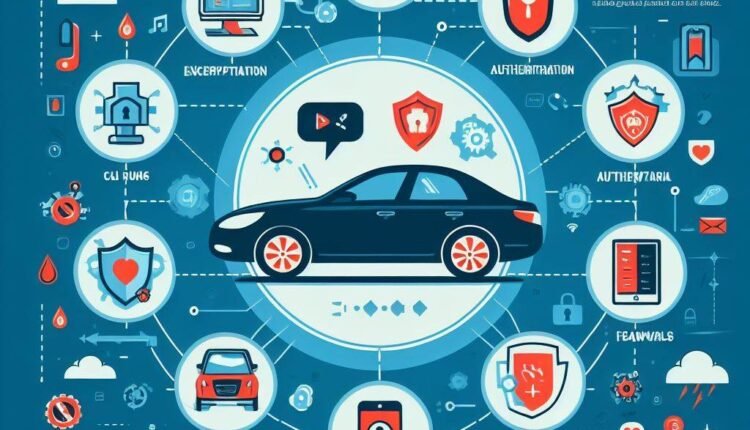How To Prevent Hackers From Taking Control Of Your Vehicle
The escalating incorporation of technological components into automobiles has generated considerable apprehension regarding the vulnerability of vehicles to cyber-attacks. It is of the utmost importance to safeguard personal and public safety by implementing effective preventive measures and understanding the cybersecurity risks associated with vehicles. The objective of this article is to furnish an all-encompassing manual on how one can impede vehicular cyber control.
Through the implementation of suggested measures, such as maintaining current software versions, establishing secure connections, employing robust passwords, and utilising monitoring systems, individuals can mitigate the susceptibility of their vehicles to hacking endeavours.
Understanding Vehicle Cybersecurity Risks
It is critical to comprehend the cybersecurity risks associated with vehicles to avert unauthorised access by cybercriminals. As the connectivity and autonomy of vehicles continue to advance, they become susceptible to an extensive array of cyber threats. Vulnerabilities within the software of a vehicle may be exploited by hackers to obtain unauthorised access to critical systems, enabling them to manipulate acceleration, steering, braking, and steering, among other functions.
These dangers are especially alarming because they may result in catastrophic catastrophes or even fatalities. To mitigate the risk of unauthorised access to one’s vehicle by hackers, it is critical to maintain a heightened awareness of the applicable cyber threats and vulnerabilities. This entails knowing the diverse attack vectors that could be exploited by hackers, including feeble authentication mechanisms and insecure wireless communication protocols.
Keeping Your Vehicle’s Software Up to Date
It is essential to update the software of your vehicle regularly to ensure its security. In addition to improving the functionality and efficacy of your vehicle, software updates also patch any vulnerabilities that could be exploited by cybercriminals.
Automakers routinely correct security vulnerabilities and fortify their systems against potential cyber-attacks by releasing software updates in compliance with vehicle regulations such as ISO 21434. By performing routine software updates on your vehicle, you can guarantee that it is outfitted with the most recent security features and safeguards.
Generally, these updates comprise security upgrades that effectively mitigate identified vulnerabilities, thereby fortifying the vehicle’s overall cybersecurity. After updating the software in your vehicle, you may proceed to the subsequent phase of fortifying the Wi-Fi and Bluetooth connections, which serve as possible points of entrance for hackers aiming to gain unauthorised entry.
Securing Your Vehicle’s Wi-Fi and Bluetooth Connections
It is critical to protect the Wi-Fi and Bluetooth connections in your vehicle from potential unauthorised access. Vulnerabilities present in these wireless connections may be capitalised upon by hackers to seize control of an array of vehicle functions, thereby endangering the occupants’ safety and privacy. It is critical to routinely update the vehicle’s software to prevent such attacks, as obsolete software may contain exploitable security vulnerabilities.
In addition, to reduce the assault surface, it is recommended to deactivate unused wireless connections when not in use. For added security, it is advisable to enable authentication mechanisms, such as encryption or robust passwords, on these wireless connections. By employing robust and distinct passwords a topic that will be elaborated upon in the following section an additional level of defence is introduced against potential cyber threats.
Using Strong and Unique Passwords
Implementing strong and unique passwords is crucial in enhancing the security of wireless connections in vehicles. Passwords act as the first line of defence against unauthorised access to vehicle systems and data. It is critical to select passwords that are challenging to deduce and to prevent the use of easily recognisable information or common patterns. Combinations of uppercase and lowercase letters, numerals, and special characters comprise a strong password.
To prevent hackers from obtaining access to multiple systems if one password is compromised, it is also recommended that a distinct password be employed for each vehicle system or device. By adhering to these password security protocols, vehicle owners can effectively mitigate the potential for unauthorised access by hackers to their vehicles.
Avoiding Suspicious Websites and Downloads
Avoiding suspicious websites and downloads is crucial in maintaining the security of wireless connections in vehicles. Cybercriminals frequently exploit vulnerabilities and obtain unauthorised access to vehicle systems via malicious websites and downloads. By downloading files from untrusted sources or visiting suspicious websites, vehicles can become vulnerable to malware and other types of cyberattacks.
These assaults have the potential to grant unauthorised individuals access to the vehicle’s engine, brakes, steering, or other vital components. As a result, vehicle proprietors must exercise prudence when downloading files or conducting online activities on their vehicles’ systems. Through the practice of circumventing dubious websites and downloads, individuals can substantially mitigate the likelihood of becoming targets of malware endeavours.
Installing Anti-Hacking Software and Firewalls
Anti-hacking software and firewalls are supplementary security measures that can be implemented to reinforce the integrity of wireless connections within vehicles. The purpose of these hardware and software solutions is to identify and thwart unauthorised access to the systems and data of a vehicle. Anti-hacking software remains vigilant on the vehicle’s network, detecting any potentially malicious activities and thwarting any security breaches.
By preventing unauthorised access, firewalls function as a barrier between the internal network of a vehicle and external connections, filtering incoming and outgoing traffic. Vehicle proprietors can enhance their protection against potential intruders by implementing the following security measures. Moreover, these tools can detect and rectify any potential weaknesses that might be present in the software or network of the vehicle.
Conclusion
Preventing hackers from seizing control of your vehicle, in conclusion, necessitates a proactive cybersecurity strategy. It is critical to maintain a state of constant vigilance and observe all requisite precautions to safeguard your vehicle from the hackers.

